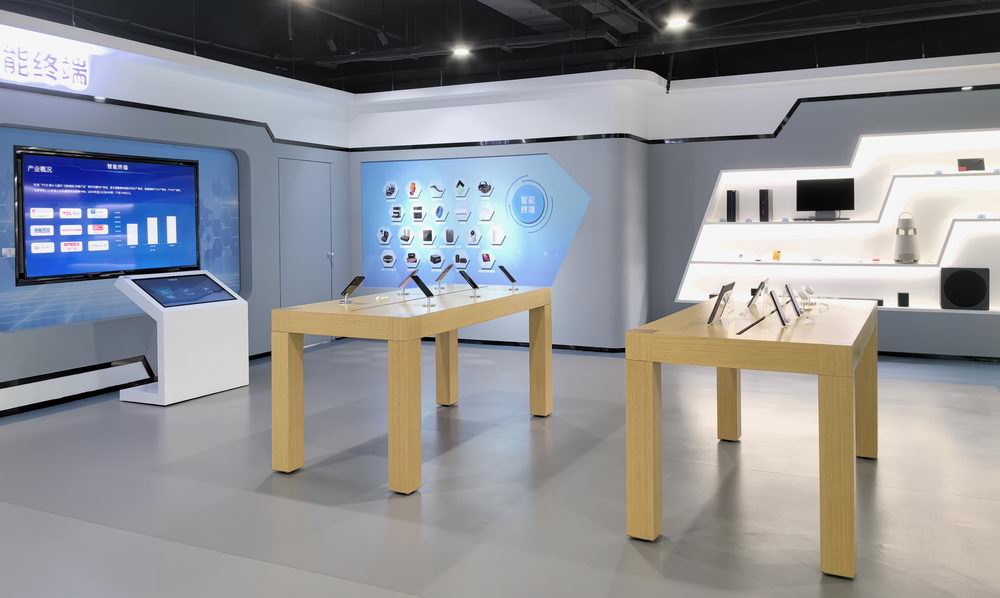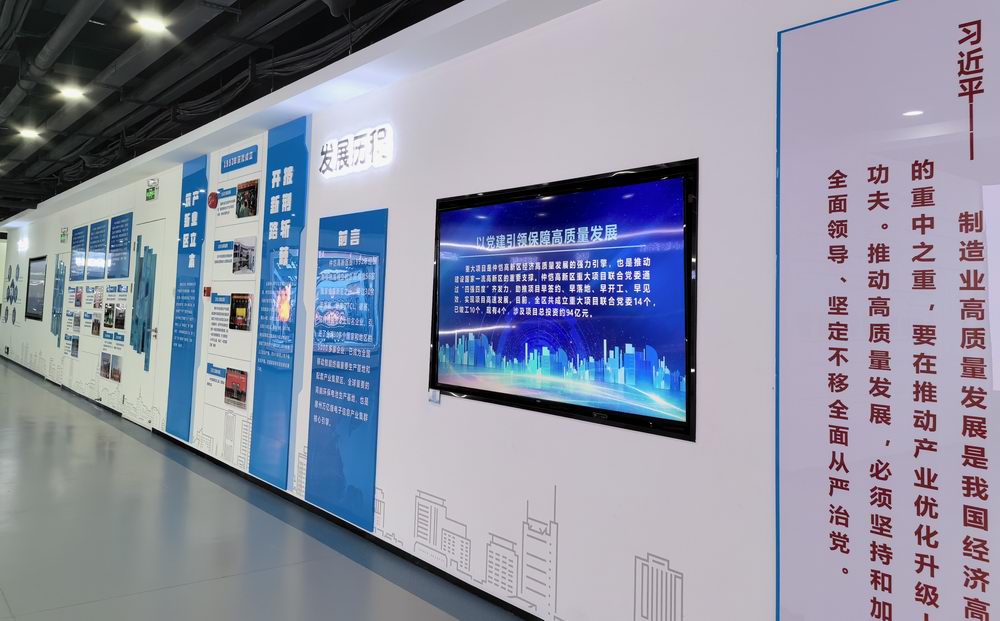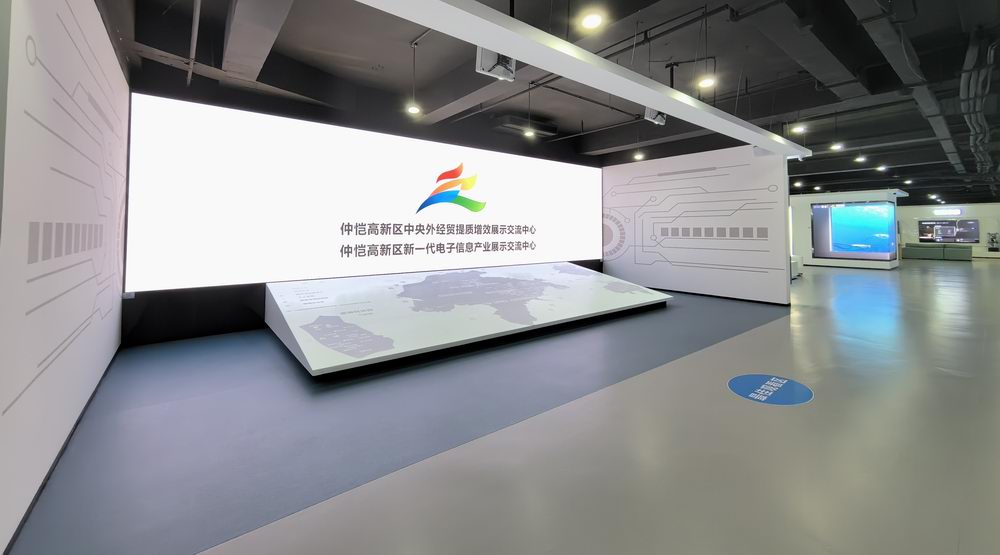What is Smart Manufacturing in Robotics?

Smart manufacturing integrates cutting-edge technologies such as robotics, sensors, and data analytics to revolutionize production processes. Robotics is essential in automating tasks and increasing efficiency. The synergy of these technologies establishes a cohesive manufacturing environment. Numerous manufacturers are embracing smart factory initiatives to enhance productivity and lower expenses. This strategy not only optimizes energy efficiency but also promotes regional economic development. The Smart Manufacturing and Robotics Technology Application Park, Regional Economic Growth Pole, serves as a prime example by encouraging innovation and aiding businesses in the Zhongkai High-tech Zone.
Technologies Involved in Smart Manufacturing

Internet of Things (IoT)
Role of IoT in Smart Manufacturing
The Internet of Things (IoT) plays a crucial role in smart manufacturing. Sensors and devices connect to the internet, allowing real-time data collection. This connectivity enhances production processes by providing insights and enabling quick adjustments. Manufacturers use IoT to monitor equipment health and predict maintenance needs. This proactive approach reduces downtime and boosts efficiency.
Examples of IoT Applications
IoT applications in manufacturing are diverse. Factories employ smart sensors to track machine performance. These sensors alert operators to potential issues before they escalate. Another example involves inventory management. IoT systems automatically reorder materials when stock levels drop. This automation ensures smooth operations and prevents delays.
Artificial Intelligence (AI)
AI's Contribution to Manufacturing Processes
Artificial Intelligence (AI) transforms manufacturing by optimizing processes. AI analyzes vast amounts of data to identify patterns and improve decision-making. Manufacturers use AI for quality control, ensuring products meet high standards. AI-driven robots handle repetitive tasks, freeing human workers for more complex roles. This shift enhances productivity and job satisfaction.
Case Studies of AI in Manufacturing
Several companies showcase AI's impact on manufacturing. One firm uses AI to streamline its assembly line, reducing errors and waste. Another company implements AI for predictive maintenance, minimizing unexpected breakdowns. These examples highlight AI's ability to revolutionize traditional manufacturing methods.
Robotics
Integration of Robotics in Manufacturing
Robotics integration in manufacturing leads to significant advancements. Robots perform tasks with precision and speed, increasing overall efficiency. Manufacturers deploy robots for assembly, welding, and packaging. These machines work tirelessly, maintaining consistent quality and output.
Types of Robots Used in Smart Manufacturing
Smart manufacturing employs various types of robots. Collaborative robots, or cobots, work alongside humans, enhancing flexibility. Industrial robots handle heavy lifting and precise tasks. Mobile robots transport materials across factory floors. Each type of robot contributes uniquely to the manufacturing process, driving innovation and growth.
Applications of Smart Manufacturing
Automated Assembly Lines
How Automation Enhances Efficiency
Automation transforms assembly lines by boosting speed and precision. Robots handle repetitive tasks with incredible accuracy. This reduces errors and speeds up production. Manufacturers see a significant increase in output. Workers focus on more complex tasks, enhancing overall productivity.
Real-world Examples of Automated Lines
Many companies embrace automated lines to stay competitive. Car manufacturers use robots for welding and painting. Electronics firms rely on automation for circuit board assembly. These examples show how automation reshapes industries. The results include faster production times and higher-quality products.
Collaborative Robots (Cobots)
Benefits of Using Cobots
Cobots work alongside humans, making manufacturing more flexible. These robots handle tasks like picking and packing. Workers enjoy safer environments as cobots take on heavy lifting. Companies see increased efficiency and reduced strain on employees. Cobots adapt easily to different tasks, offering versatility.
Case Studies of Cobots in Action
Cobot Welding System: A leading logistics company implemented a cobot welding system. Workers shifted to more ergonomic tasks like fabricating and tacking. This change improved job satisfaction and efficiency.
In the Zhongkai High-tech Zone, the National Foreign Trade Transformation and Upgrading Base supports businesses with an electronic information cloud platform. This platform aids companies in integrating cobots effectively. Enterprises experience growth and innovation through this support. The cloud platform provides valuable resources for development and transformation.
Benefits of Smart Manufacturing
Increased Efficiency
How Smart Manufacturing Boosts Productivity
Smart manufacturing ramps up productivity by using advanced tech. Factories use automation and IoT to streamline operations. Machines talk to each other, cutting down on delays. This setup means faster production and fewer hiccups. Companies see a big jump in output and smoother workflows.
Examples of Efficiency Improvements
Many companies have seen big gains. One electronics firm cut production time by 30% with smart systems. Another factory used IoT sensors to reduce machine downtime. These changes led to quicker deliveries and happier customers. Smart manufacturing keeps everything running like clockwork.
Cost Reduction
Ways to Reduce Costs Through Smart Manufacturing
Smart manufacturing slashes costs in clever ways. Automation handles repetitive tasks, saving on labor. AI predicts maintenance needs, avoiding expensive breakdowns. Energy-efficient machines lower utility bills. These strategies mean more money stays in the company's pocket.
Case Studies on Cost Savings
Several businesses have saved big bucks. A car manufacturer reduced energy use by 20% with smart tech. A packaging company cut material waste by half. These examples show how smart manufacturing trims expenses. Companies enjoy better margins and reinvest in growth.
Improved Quality
Quality Control in Smart Manufacturing
Quality takes center stage in smart manufacturing. AI checks products for defects, ensuring top-notch standards. Sensors monitor every step of the process. This attention to detail means fewer errors and higher customer satisfaction. Quality control becomes a breeze with smart systems.
Examples of Quality Improvements
Real-world stories highlight quality gains. A food producer improved product consistency with AI inspections. An appliance maker reduced defects by 40% using smart sensors. These improvements boost brand reputation and customer trust. Smart manufacturing delivers excellence every time.
In the Zhongkai High-tech Zone, the National Foreign Trade Transformation and Upgrading Base supports businesses with an electronic information cloud platform. This platform helps companies integrate smart manufacturing tools. Enterprises experience growth and innovation through this support. The cloud platform provides valuable resources for development and transformation.
Emerging Trends and Future Directions

Cognitive Robotics
Definition and Potential Impact
Cognitive robotics represents a new frontier in manufacturing. These robots think and learn from their environment. Imagine robots that adapt to changes on the factory floor. Cognitive robotics combines artificial intelligence with robotics. This fusion allows machines to make decisions without human intervention. The impact? Factories become more efficient and flexible. Manufacturers can respond quickly to market demands. Cognitive robotics could revolutionize production lines.
Examples of Cognitive Robotics in Use
Real-world examples highlight cognitive robotics' potential. Unimate, the first mass-produced robotic arm, paved the way for industrial robots. Today, cognitive robots perform complex tasks. In the 1980s, the introduction of the Delta Robot made picking and packing easier. Now, cognitive robots handle intricate assembly processes. These advancements showcase the power of smart automation technologies. Manufacturing industries witness positive transformations.
Smart Factories
Characteristics of Smart Factories
Smart factories are the future of manufacturing. These facilities use interconnected systems and machinery. Real-time data flows seamlessly across the production line. Machines communicate to optimize operations. Smart factories rely on advanced technologies like IoT and AI. This setup enhances efficiency and reduces waste. Manufacturers enjoy streamlined processes and improved product quality. Smart factories embody modern industrial innovation.
Future Outlook and Developments
The future of smart factories looks promising. Emerging technologies continue to shape these facilities. Expect more integration of cognitive robotics. Factories will become even more autonomous. The Zhongkai High-tech Zone plays a crucial role here. The National Foreign Trade Transformation and Upgrading Base supports businesses. An electronic information cloud platform aids enterprises in this zone. Companies benefit from valuable resources for growth and innovation. The future holds exciting possibilities for smart manufacturing.
Impact on Industries
Smart Manufacturing and Robotics Technology Application Park, Regional Economic Growth Pole
Overview of the Park
The Smart Manufacturing and Robotics Technology Application Park, Regional Economic Growth Pole stands as a beacon of innovation. This park integrates advanced technologies to enhance manufacturing processes. Companies find a hub where cutting-edge robotics and smart systems thrive. The park fosters an environment where creativity meets technology.
Role in Regional Economic Growth
The park plays a crucial role in boosting regional economic growth. Businesses benefit from increased efficiency and reduced costs. Smart manufacturing optimizes production, saving energy and boosting profits. The park attracts new investments and creates job opportunities. Local economies see a surge in development and prosperity.
Case Study: Huizhou Zhongkai High-tech Zone
Overview of the Zone
Huizhou Zhongkai High-tech Zone serves as a dynamic center for technological advancement. This zone supports enterprises with state-of-the-art facilities. Companies find resources that drive innovation and growth. The zone's infrastructure promotes seamless integration of smart technologies.
Impact of Smart Manufacturing
Smart manufacturing transforms operations within the Zhongkai High-tech Zone. Organizations experience faster, safer, and more efficient processes. The technology identifies inefficiencies and drives improvements. Productivity soars as companies embrace these advancements. The zone becomes a model for modern industrial success.
National Foreign Trade Transformation and Upgrading Base
Role in Smart Manufacturing
The National Foreign Trade Transformation and Upgrading Base plays a pivotal role. This base supports businesses in adopting smart manufacturing tools. Enterprises gain access to essential resources and expertise. The base facilitates the transition to more advanced production methods.
Examples of Transformation and Upgrading
Companies within the base witness remarkable transformations. The electronic information cloud platform provides critical support. Businesses streamline operations and enhance product quality. The platform aids in integrating collaborative robots and IoT systems. Enterprises enjoy growth and innovation, setting new industry standards.
Smart manufacturing transforms industries by boosting efficiency and cutting costs. The Zhongkai High-tech Zone's National Foreign Trade Transformation and Upgrading Base offers vital support. This electronic information cloud platform aids businesses in adopting smart technologies. Companies in the zone experience growth and innovation. The future holds exciting possibilities with advancements in robotics and AI. Embracing these technologies can lead to smarter, more efficient operations. Investing in smart manufacturing drives productivity and reduces expenses. The journey toward a smarter manufacturing landscape continues to evolve, promising a brighter future for industries worldwide.
See Also
Maximizing Growth Opportunities in High-tech Zones
Leading the Way in the Worldwide Smart Control Sector
Discovering the Advantages of Zhongkai for Mobile Manufacturing
Zhongkai High tech Zone National foreign trade transformation and Upgradi Base(Electronic Information)Cloud Platform.
Address: Zhongkai High-tech Zone,Huizhou City ,Guangdong,China
E-mail: huizhoueii@163.com 13510001271@163.com
Tel: +86-0752-3279220 Mobile: +86-13510001271


